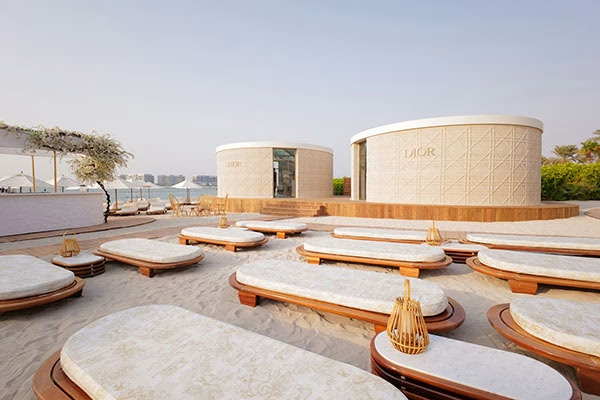There were articles in the past about how 3D printing will transcend beyond making parts for common applications, and it seems the future for this manufacturing is here.
The Dior pop-up store at the picturesque Nammos Beach at the Four Seasons Resort in Dubai wowed the world using 3D printed sustainable materials. The unique, Avante Garde 3d-printed Dior installation pushed the envelope to show how sustainable concepts are possible in the new normal.
This ambitious project was made possible by the creative collaboration between the brand and the company, WASP or World’s Advanced Savings Project. It is the leader in sustainable construction. Their projects are more on building structures using sustainable concepts and cutting-edge technology such as 3D printing. Their company aims to minimize the use of non-renewable resources and leave a minimal carbon footprint.

3D printed pop-up stores
The Challenges of the Construction
The stunning structure is a 3D-printed installation. It is a first of its kind since it features two circular modules built from all-natural materials. The builders combined natural fibers, sand, and clay in building the modules layer by layer using mind-blowing 3D printing technology.
It resembles the half-moon design that is connected. According to the Italian company behind the project, WASP, the goal is to use only natural products with 3D printing on the construction of the store.
According to them, the most challenging part of the project was printing the brand’s signature pattern, the Cannage motif. This made up the exterior wall, and the difficulty was in programming the codes for the machine. The dis gold Dior logo was added with backlit to complete its identity.
The modules used on the interior of the store are made with 3D printing. It was formed by adding multiple layers on top of one another. It serves as a blank canvas with wallpaper texture and is ready to decorate with the décor and furnishings.
Beating the Heat
The construction should have been easy, but another challenge is the extreme heat and sand of the desert. They had to build large white tents on the location to protect the machines and to properly place the two modules. After building the tents, 3D printing was a breeze.
Steel structures were built to support the modules while they are set in place. They also placed skylights on the roof to let the natural light into the store. The Christian Dior signature is an added touch to the roof, to add drama to the uber-modern structure.
Wooden platforms served as walkways. One of them leads to the store while the other two serve as foundations to hold the bottom part of the modules.
The Dior pop-up store in Dubai serves as an example of how far the application of 3D printing can go. Its modules are 3D printed by combining natural fibers sand, and clay through 3D printing.
In the future, this project could be a model for producing sustainable, low-cost housing in some of the poorest areas in the world.
